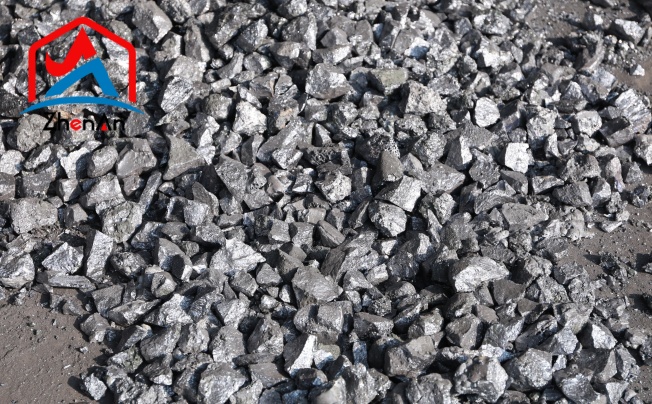What Is Magnesium Metal?
Magnesium is an atomic number twelve element represented by the symbol Mg. It is a low-density, low melting point, and highly reactive metal that has a glossy grey colour. It only exists naturally in combinations with other elements, just as other alkaline earth metals, and its oxidation state is nearly always +2. It easily produces a thin magnesium oxide passivation layer when exposed to air, which stops the metal from corroding any further. The primary method for obtaining the free metal, which glows brightly white, is the electrolysis of magnesium salts extracted from brine.
Magnesium metal was initially synthesised in an imperfect form by Anton Rupprecht in 1792. Humphry Davy separated a pure, albeit small, amount of the metal in 1808 by electrolyzing magnesium oxide. When used as an alloying agent, it increases the mechanical, fabrication, and welding properties of aluminium and is one-third less dense than aluminium. These alloys are helpful when building cars and aeroplanes.
Magnesium has a density of 1.74 g/cm3, making it the lightest structural metal. It has a dense, solid texture and is solid at normal temperatures. When pure magnesium is cut or polished, it usually has a bright, silvery-white appearance. It reflects light similarly to other metals and has a shiny sheen. To increase its hardness, tensile strength, and suitability for casting, welding, and machining, magnesium is primarily utilised in alloy form, especially when combined with ten per cent or less of aluminium, zinc, and manganese. Magnesium alloys find use in many different applications, such as parts for automobiles, industrial, spacecraft, aeroplanes, portable tools, and home appliances.
Corrosion of Magnesium
Magnesium also naturally undergoes corrosion as a result of metals reacting with their surroundings. Magnesium corrodes when it comes into contact with oxygen or moisture. Magnesium oxide is created when magnesium metal combines chemically with oxygen, causing magnesium corrosion. The above is expressed mathematically: 2Mg + O2 -> 2MgO. This reaction typically proceeds slowly, but the presence of water or high humidity might speed it up.
On the metal's surface, the corrosion creates a thin, white film of magnesium oxide. This has protective value, even though it may not be visually appealing. Through a process called passivation, this oxide layer serves as a barrier to stop additional corrosion from reaching the metal's interior layers.
Magnesium corrosion, however, can become a bigger problem in harsh conditions with high salt concentrations or the presence of strong acids. This is caused by a phenomenon called "galvanic corrosion," which can lead to significant material loss and, in extreme circumstances, the magnesium component failing entirely.
Magnesium frequently needs to be coated or treated to strengthen its resistance to corrosion, especially when used in harsh settings. Magnesium is frequently protected from corrosion by methods like painting, chromate conversion coatings, and anodizing.
In conclusion, even though magnesium corrodes in some situations, knowing how it happens and how to stop it is essential to using the metal successfully in a variety of settings.
Magnesium Metal Rust Protection and Surface Treatment
Magnesium is a lightweight, flexible metal that corrodes easily in the presence of air and moisture. Magnesium may be made more durable and resistant to corrosion by using a few different methods. These surface treatments can improve the metal's visual attractiveness in addition to providing protection.
Anodizing is an electrochemical procedure that thickens the metal's surface's naturally occurring oxide layer. Anodizing improves paint primer and glue adherence, reducing chipping and peeling. Additionally, it offers a better lubricating surface.
- Chromate Conversion Coatings: To slow down corrosion, passivate magnesium, aluminium, zinc, copper, silver, tin, and their alloys using this form of conversion coating. The metal is dipped in a solution of chromic acid to change its surface metal into a chromate coating.
- Primer and Paint: Another popular technique for preventing magnesium from corroding is to use a primer and paint. Both the primer and the paint offer an additional layer of protection from the weather and aid in the paint's better adhesion to the metal surface.
- E-Coating: This painting technique applies paint to the magnesium surface by use of an electrical current. It makes homogeneous coating possible even in regions with intricate geometries.
Applying a decorative and protective layer of powder to the magnesium surface is known as powder coating. Usually, the powder is applied electrostatically and heated to cure it into a tough, long-lasting coating.
- Corrosion Inhibitors: To slow down or stop corrosion, these substances can be added to the magnesium surface. They function by creating a thin layer that shields the metal surface from corrosive substances.
Though it's vital to keep in mind that the efficiency of these treatments can depend on the particular environmental conditions the magnesium will be subjected to, they can offer substantial protection against corrosion. As a result, the intended usage and anticipated conditions of the magnesium component should be considered while choosing the best course of action.
Use of Magnesium in Rust Prevention
Magnesium, due to its unique properties, is often used in rust prevention strategies, particularly in a method known as "cathodic protection".
Cathodic protection is a technique used to control the corrosion of a metal surface by making it the cathode of an electrochemical cell. This method is commonly used to protect steel, which is used in a variety of structures, such as pipelines, water storage tanks, and offshore platforms. In this process, a more reactive metal, such as magnesium, is used as a sacrificial anode. The sacrificial anode is a piece of metal that is electrically connected to the surface of the material to be protected (e.g., iron or steel).
Magnesium is more reactive than iron or steel, which means it will corrode in preference to the iron or steel it is protecting. This sacrificial corrosion of magnesium effectively protects the steel or iron structure from rusting. The sacrificial anode will eventually corrode completely and need to be replaced, but this is a much more cost-effective and less disruptive process than having to repair or replace the larger structure due to rust damage.
It's important to note that this method is very effective in environments where the metal structure is in contact with a lot of water or soil, which are common conditions that promote rust.
In conclusion, the use of magnesium in rust prevention strategies is a proven and effective method for protecting metal structures against corrosive damage.






